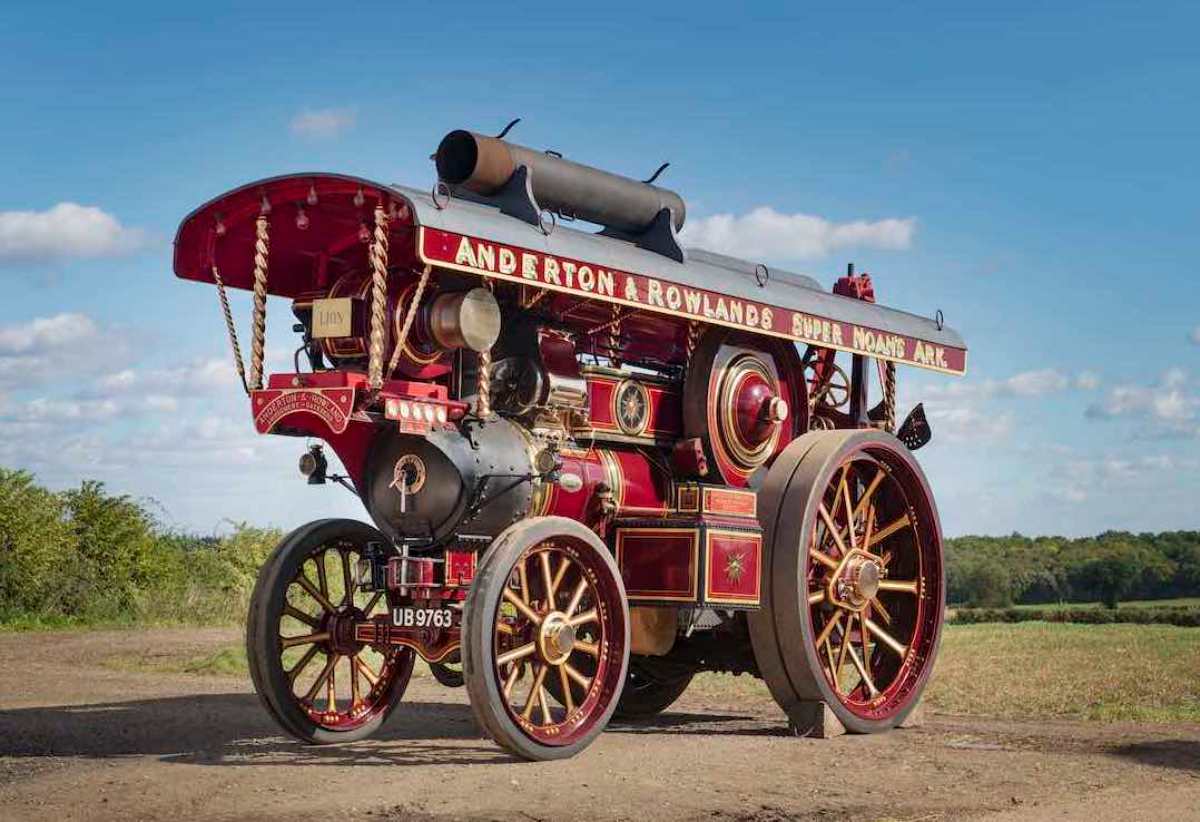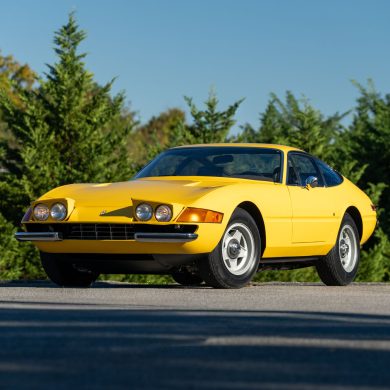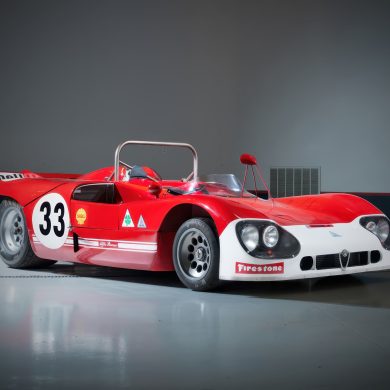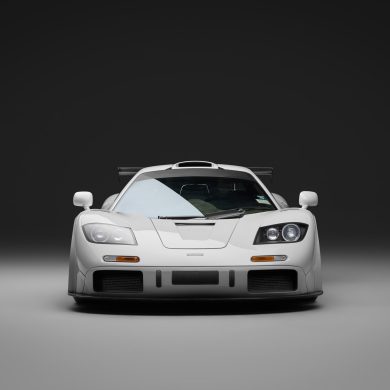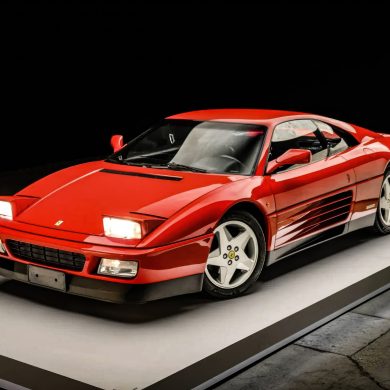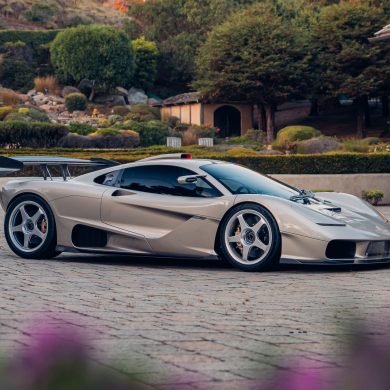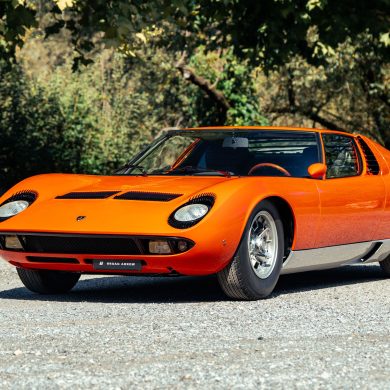A unique 1932 Fowler 10hp ‘B6’ Showman’s Road Locomotive, ‘The Lion’, manufactured at the end of the steam era, took the prize for the highest sale price, selling for £911,000 at Bonhams ‘The Golden Age of Motoring’ Sale in London on 30 October.
After a transatlantic bidding contest between bidders in the UK and USA, ‘The Lion’ was ultimately sold when the hammer of the auctioneer fell in favor of one of the most extensive steam collectors in the UK.
The new custodian, Mr John Saunders, reported the Fowler locomotive was a belated “birthday present” to himself and would be displaying the steam engine in the new year at steam fairs, if COVID-19 restrictions would allow.
Two other unique sales the commanded strong prices included a 1929 Bugatti Type 40 Grand Sports Tourer, and a 1901 Panhard Et Levassor Type A2 7HP Twin-Cylinder Rear Entrance Tonneau.
‘The Lion’ 1932 Fowler 10HP B6 Showman’s Road Locomotive
Estimate: £800,000- £1,200,000. Sale Price: £911,000
The story of ‘The Lion’ started back in the early 1920s when Mr. Harold Livesey left Fowler’s works manager due to a disagreement and then became a general manager at Charles Burrell & Sons of Thetford. It was there that he met and made friends with the sales manager, Sydney Harrison. Livesey returned to Fowler’s after a few months and when Burrell’s closed in 1928, Harrison was eventually offered a job at Fowler’s.

Harrison’s knowledge of Burrell products, as well as his relationship with showmen users of Burrell engines, became a great asset to Fowler’s. He worked closely with Fowler’s designer Alf Pepper and Harold Livesey to create four ‘Super Lions.’
The first of the four Class B6 10hp ‘Super Lion’ showman’s road locomotives to be completed was ‘The Lion.’ It was designed with twisted brass pillars and knobs for the awning. They also placed twisted brass on the brake spindles and steering and added a water lifter on the offside front tank. Brass stars were fitted on the front tanks and had brass molded boiler bands.

The works plate was fitted to the boiler cladding, and it had brass stars and rings on the motion covers. Interestingly, the electric headlamps as well as the inspection lamp were battery powered.

The delivery price of ‘The Lion’ was at £1,470, with the added price of £48 for the special car-lifting crane.
From Fowler’s Workshops in Leeds, ‘The Lion’ was dispatched in 1932 by rail and delivered to St. David’s railway station in Exeter, Devon for showground operators Anderton & Rowland of Bristol.
The Lion was the first Fowler showman’s road locomotive to join the A&R fleet. While in A&R, The Lion was used to drive around fairground rides like the ‘Diving Dolphins,’ ‘Noah’s Ark,’ ‘Lightning Swirl,’ and ‘Brooklyn Racer.’

The Lion retired in 1946 and was in A&R’s Bristol yard until Mr. Ernie Lucas of Salisbury purchased her in 1950 for preservation. ‘The Lion’ without dynamo, was sold for £50 and was brought to Salisbury.
Over the years, ‘The Lion’ was part of early traction engine rallies, like those at Cranborne and Andover, and some private steam ups as well. It is said that her last appearance was at the Wimborne St Giles Fair in 1964. She was then parked under a large open-sided barn at Bert Dibben’s farm in Martin, Hampshire.
The engine was sold to Arthur Thomson in 1995, after Lucas’ death the year before. She was finally given a thorough first-class restoration to restore it to the condition as new. The extensive work took two and a half years to complete.

Upon completion in 1998, ‘The Lion’ made its post-restoration debut at Carter’s Steam Fair at Pinkneys Green, Berkshire. It has been a common sight at steam rallies, fairs, carnivals, and other similar events south of England including the Great Dorset Steam Fair and the Royal Bath & West Show, since then. After Arthur Thomson’s demise in 2018, the engine was given to his brother Frank.
‘The Lion’ is considered to be one of the finest genuine showman’s road locomotives in preservation.
1901 Panhard Et Levassor Type A2 7HP Twin-Cylinder Rear Entrance Tonneau
Estimate: £225,000- £275,000. Sale Price: £322,00
Mercedes Benz might have brought about the dawn of the automobile, but in a lot of ways, the Systéme Panhard was the pioneer in many ways how cars are operated.
Panhard moved the engine to the front under a ‘bonnet.’ They changed the transfer of speed to mechanical, cog on cog, instead of by a belt, and they were also the first to encase their geared transmission in a ‘box.’
The piano-style pedals were also introduced by Panhard to operate the clutch and transmission breaks. Initially, they used a tiller to operate the directional control of the car, but they replaced it with a ‘steering’ wheel.
Only one main aspect of the example shows its age and it is the transfer of power to the road by chains from the transfer ‘box.’
The Type A2 Panhard-Levassors can be called a transitional model as they still have the Daimler-Phénix powerplant which the brand was built on, but it is in a body with a lower frame and proportions that were more user friendly.
Along with their obvious importance to the history of the automobile, what sets this example apart is that the original ledgers of Panhard-Levassor cars that show their order and supply information that can prove their age have survived, a feat that is a challenge for other models and marques.

Extensive research has been done on this example by its current owner. According to Panhard-Levassor ledger records, it shows that the motor car was built with a 7hp engine with chassis number 3114 on October 25, 1901.
Currently, the car has a La Carrosserie Industrielle coachbuilder plaque that it has worn starting 1960s at least. The firm was Paris-based and was probably the builder of its body for Panhard.
Over the last 7 years, thorough research was done on the Panhard to make sure that a restoration would be very accurate, and it was then entrusted to known experts.
A majority of the work fell on the shoulders of Tattersalls Veteran to Classic. They refurbished the mechanical parts as necessary, which included an engine rebuild with new bearings, a repair on one of the mountings, new drive cogs, and putting in a modern starter motor.
It is notable that it was during the restoration that they noticed that the pistons have domed heads, a hint to an attempt to improve its performance.
Woodwork expert David Thompson worked on the rear bodywork, and with the use of a surviving factory 1901 car, he assured the rear was rebuilt to its original rear entrance tonneau design. They replaced the bowed wood members of the frame, and an additional transverse leaf spring was also removed to return the body to its original form.
Esteemed trimmer Julian Taylor from Protectus did the upholstery work where he put a two-piece front/rear tonneau cover in double duck. Daniel Garner from Garner’s Wheelwrights brush-painted the whole car in period style Brewster Green.
The work was finalized over the last 12 months which included a test run on the London to Brighton in 2019.
1929 Bugatti Type 40 Grand Sport Tourer
Estimate: £270,000- £330,000. Sale Price: £310,500
By the 1930s, Ettore Bugatti has cemented his reputation for constructing automobiles that gave outstanding performance both on the track and on the road. The world’s racing drivers enjoyed their successes using the Bugatti machines, and more often than not, even using them for their everyday driving. However, Bugatti’s origins were vastly different from the glamour and prestige of the Grands Prix.
Ettore Bugatti was an Italian-born engineer that worked with De Dietrich, Mathis, and Deutz before he set up his own factory in Molsheim, Alsace in 1910, then a part of Germany.
He designed the Type 10 while he was with Deutz, the number reflecting the nine previous designs. This was the prototype of the first Molsheim-built Bugatti, the Type 13.
It was initially introduced in 1910 as the first Bugatti production car and was powered by a four-cylinder, single-overhead camshaft, 8-valve engine of 1,327cc, four-speed gearbox, mounted on a short-wheelbase chassis that had a simple two-seater body. The Type 13 made its debut at the 1910 Paris Salon and was described as a ‘most delightful looking runabout’ by The Autocar.
The Type 13 Brescia was developed from the first Bugatti built at Molsheim, taking the name from the factory’s first four places that they got at the 1921 Italian Grand Prix for Voiturettes, which was held at the racetrack in Lombardy.
Type 22 and Type 23 models were produced with a longer wheelbase and equipped with a single-overhead-camshaft, 16-valve Brescia engine. They were built alongside the 8-valve Petit Pur Sang versions.

The Type 40 Bugatti was introduced in 1926 and was the successor of the Brescia types as it was built on a longer wheelbase but had a more powerful engine. The single overhead camshaft operated three valves per cylinder, two for inlets, and one was for exhaust, and the maximum power output of the Type 40 was 45bhp which was transmitted to the rear wheels through a separate four-speed gearbox.
There are 790 Type 40s that were produced when Bugatti stopped production in May 1931, and an additional 40 Type 40As were produced with the 1,627cc engine by the end of the year. Less than 200 units are estimated to have survived.

The car is still original, keeping all the parts that were removed, and any original parts that were needed were located from the UK and overseas. It is in good condition, runs well, and the engine was regularly started. It fired up on the first try in July 2020 when the car was moved for storage.
Top 10 Sales at the Bonhams Golden Age of Motoring Auction:
| Lot no. | Price | Vehicle |
|---|---|---|
| 226 | £911,000 | 1932 Fowler 10HP B6 Showman’s Rd Locomotive ‘The Lion’ |
| 211 | £322,000 | 1901 Panhard et Levassor Type A2 7hp Twin-Cylinder Rear-Entrance Tonneau |
| 215 | £310,500 | 1929 Bugatti Type 40 Grand Sport Tourer |
| 206 | £304,750 | 1903 Thornycroft 20HP Four-cylinder Double Phaeton |
| 217 | £258,750 | 1924 Vauxhall 30-98 OE-Type Velox Tourer |
| 219 | £132,250 | 1938 Lagonda V12 Drophead Coupé |
| 207 | £97,750 | 1922 Delage CO2 4½-Litre Dual Cowl Tourer |
| 225 | £96,600 | 1902 Arrol-Johnston 10/12HP Dogcart |
| 205 | £90,850 | 1920/21 Rolls-Royce 40/50HP Silver Ghost Doctor’s Convertible Coupe |
| 210 | £90,850 | 1932 Alta 1½-Litre Supercharged Sports |
[Source: Bonhams]


